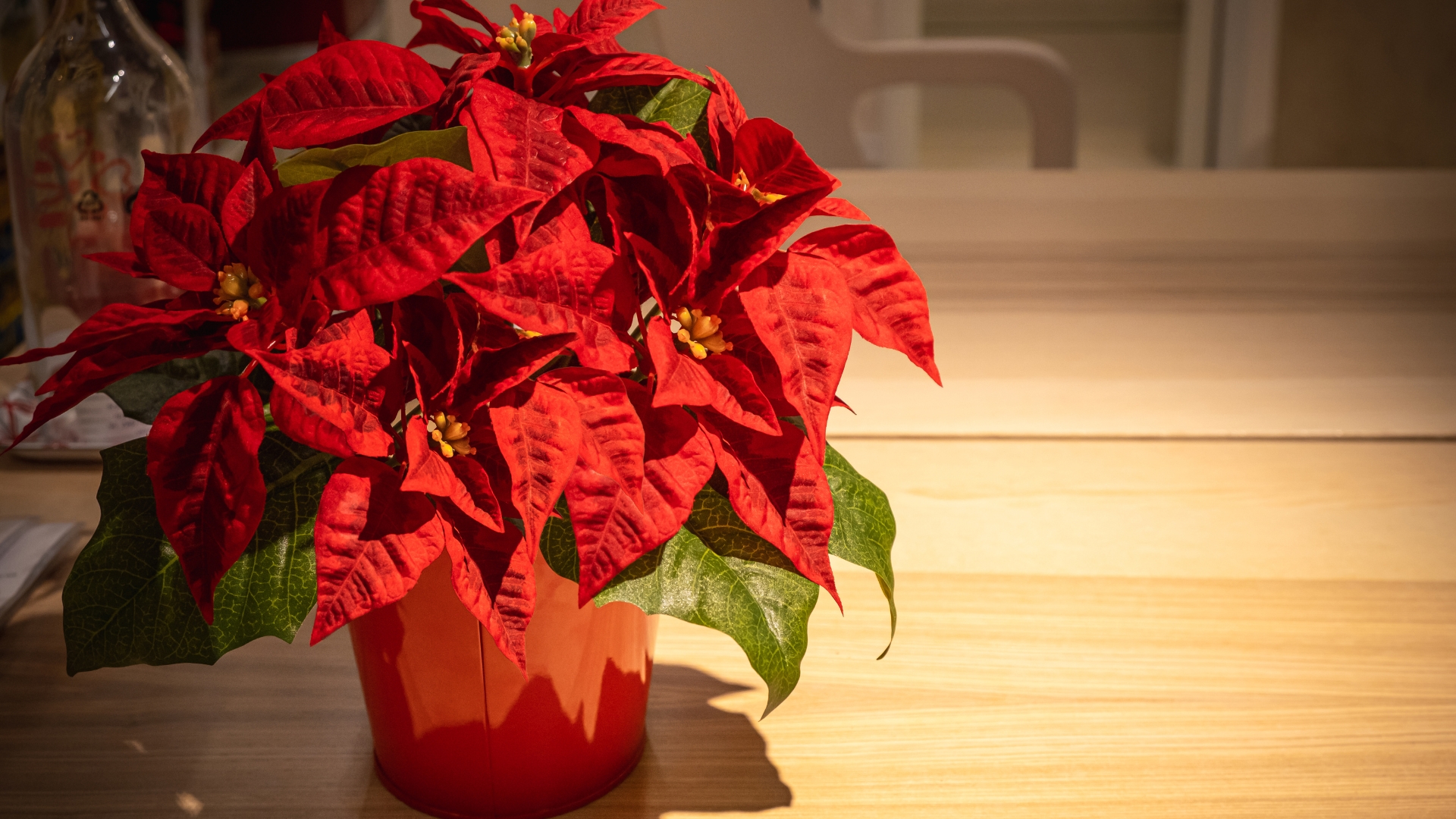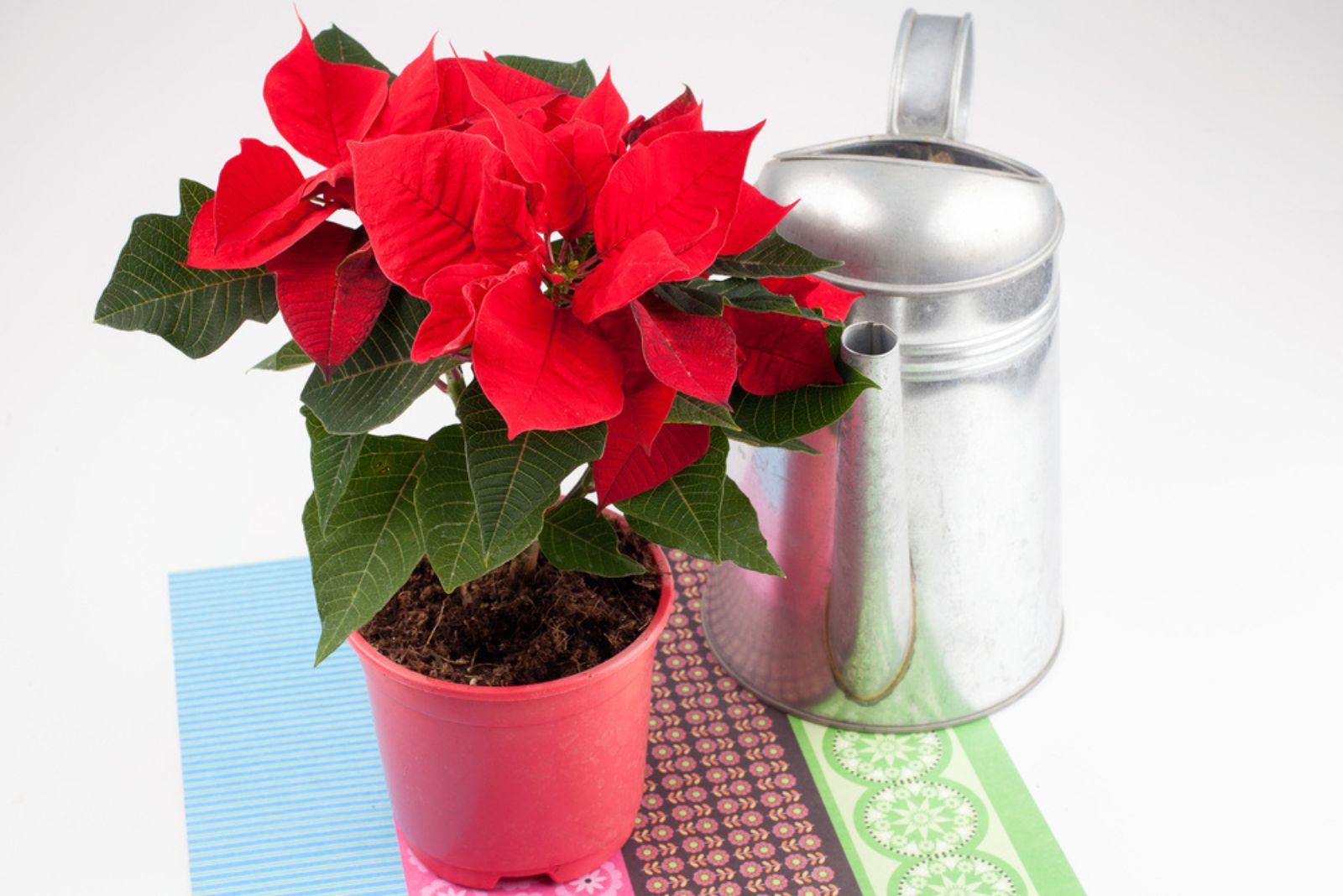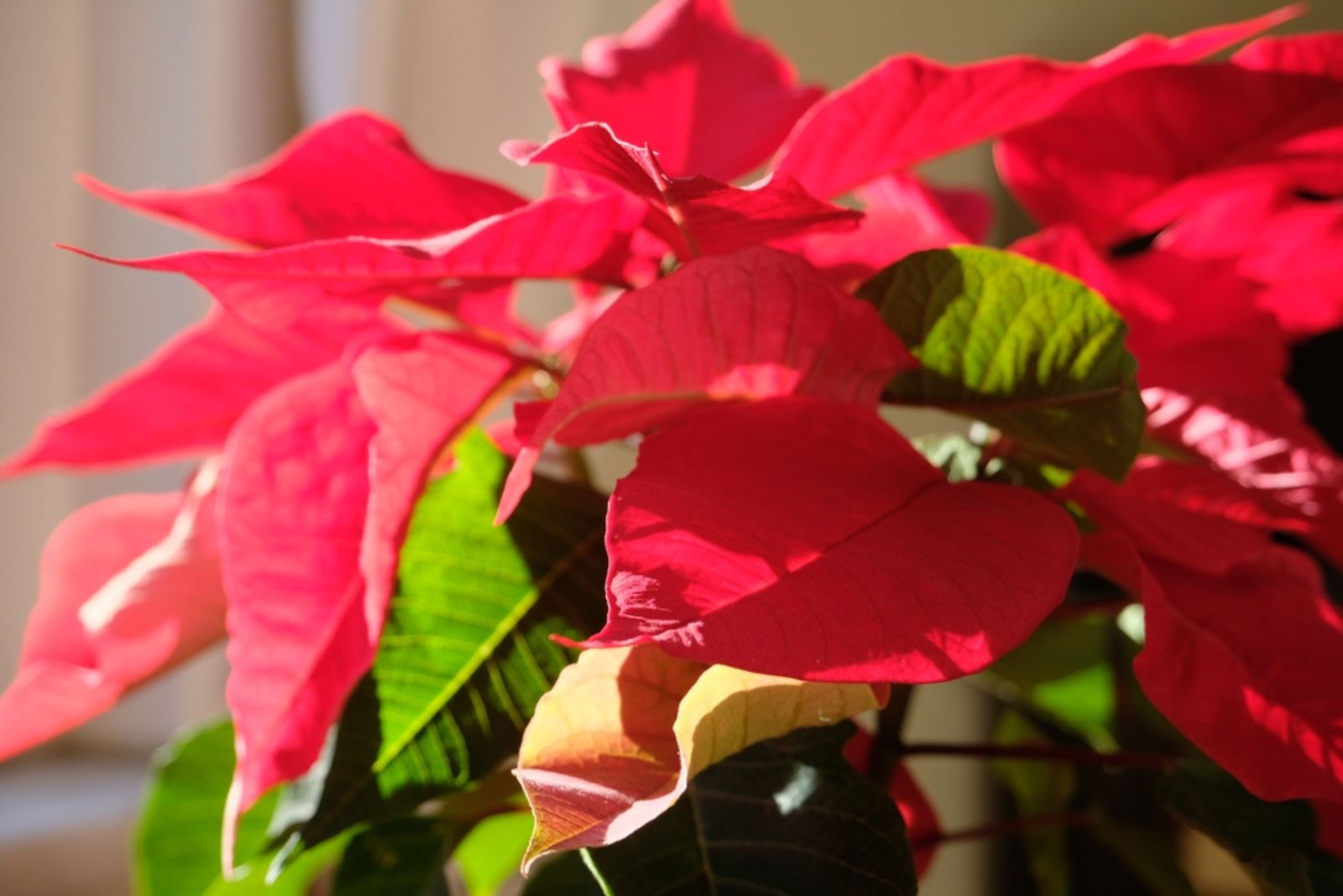The holiday season is getting closer! If you’re a gardener, now doesn’t seem too early to start prepping.
One of the trademarks of this beautiful time of year is the lovely poinsettia. Its stunning, brightly colored leaves (bracts, to be more precise) steal the spotlight of the market shelves and do the same in our homes.
But more often than not, these leaves start falling off, causing many growers to start panicking. I know the drill all too well!
Let me tell you one thing, if your poinsettia loses a leaf or two, that shouldn’t scare you. Plants do this and it’s just their way of adapting to their new surroundings.
But if the leaves continue to fall off, your poinsettia is waving a red flag. Learning the root cause is key to finding the solution ASAP.
Don’t panic – I’ve got you covered! I’ll explain why your poinsettia’s leaves are dropping and what you can do to turn things around!
1. Your Watering Routine Is Wrong!
The easiest way to destroy a plant, no matter the variety, is incorrect watering!
Poinsettia isn’t an exception to this. If it keeps losing leaves, you must check soil moisture levels. Both overwatering and underwatering can cause leaf drop in poinsettias.
Yellowing, soggy and smelly soil, and soft leaves are the telltale signs of too much water. Unfortunately, overwatering is the leading cause of a dying poinsettia.
Be careful with yellow leaves because they can also be a sign of underwatering. In this case, your poinsettia will display wilting, drooping, and overly dry soil.
What to do? Your goal is to water your poinsettia when the top two inches of the soil dry out. You can check the soil moisture using the good old finger technique, which basically involves putting your finger in the topsoil.
If you’re a beginner and unsure about this method, I highly recommend investing in a moisture meter.
2. Your Poinsettia Is Stressed Due To Temperature Fluctuations
When I first bought a poinsettia, the leaves started dropping as soon as I brought it back home. I remember how cold it was outside.
But only later did I learn that even such a small amount of exposure to low temperatures can lead to leaves falling off the plant.
You see, poinsettias are purchased during the winter time, so it’s essential to ensure a warm spot once you get the plants to your home. I always keep my poinsettias at temperatures ranging from 65 to 70 degrees Fahrenheit.
Additionally, make sure you don’t place your poinsettia near cold drafts or too much heat from central heating. Temperature fluctuations are the sworn enemy of these plants, especially when you want your poinsettias to rebloom.
3. Light Levels Are Too High Or Too Low
Let there be light is the key phrase for our indoor buddies. Of course, we need to be very careful with the amount of light our plants receive.
For poinsettias, you should aim for bright indirect light. Too much direct light can quickly weaken the plant and result in leaf drop.
The same goes for low light!
But if you want your poinsettia to survive and bloom again the next year, you’ll need to keep it in the dark after the holiday season.
4. The Surrounding Air Is Too Dry
If all the conditions above are in order, then you might want to check the humidity. It’s true that poinsettias are tolerant to lower humidity levels but remember that these are tropical plants used to high humidity.
Dry air will cause your prized poinsettias to lose leaves, so increasing air moisture is essential.
There are a few ways to do it but I’ll show you my favorite ones. For all my tropical plants, I put a shallow dish filled with rocks and water below the pot.
The second option is more effective and if you’re a beginner I highly recommend it. A humidifier is the best possible solution to humidity issues.
Recreating conditions from poinsettia’s natural environment will always give you healthy and lush plants during the holiday season.
So, if your poinsettia’s leaves are dropping, now you’ve uncovered the culprits. With our simple tips and tricks, you’ll have it back on track in no time!





